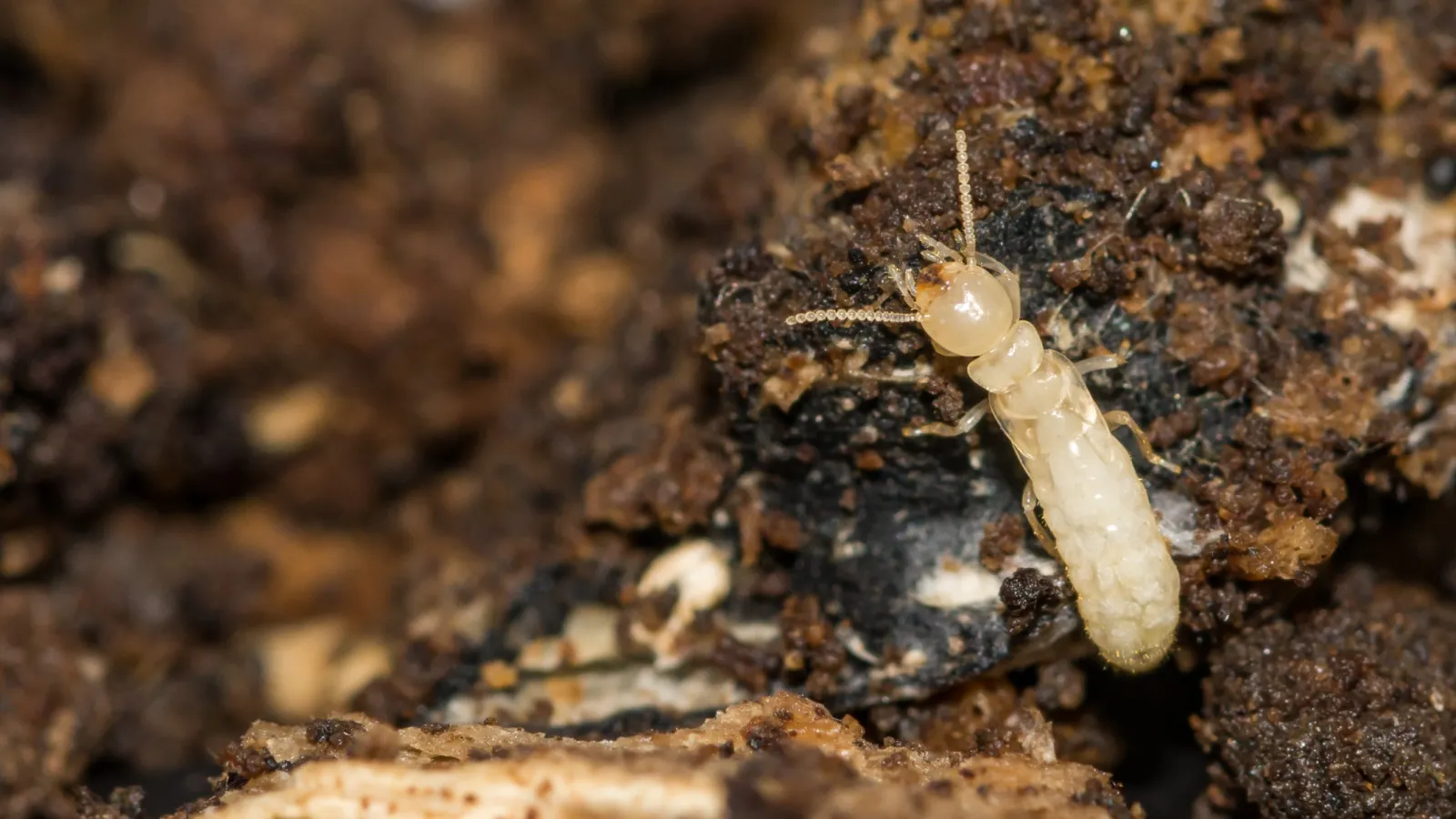
Eastern Subterranean Termites
Latin Name: Reticulitermes flavipes
Eastern Subterranean Termites are the most common termite species in the United States, primarily found in the Southeastern portion of the country. These termites live in large, complex colonies underground, consisting of workers, soldiers, and reproductives. Each caste has a specific role in the colony's survival. The workers, which are the most numerous, are responsible for gathering food and maintaining the nest. Soldiers, recognizable by their larger mandibles, protect the colony from threats like ants. Reproductives focus on populating the colony; a well-established queen can lay up to 1,000 eggs per day.
Subterranean termites are tiny. Workers typically measure between 1/8 and 3/8 of an inch long, with soft, pale bodies that are almost translucent. The reproductive alates, also known as swarmers, are darker and equipped with wings, resembling flying ants. These swarmers are responsible for leaving the colony to mate and establish new colonies.
One of the key characteristics of subterranean termites is their diet. They feed on wood and other cellulose-based materials, breaking down into digestible sugars. This ability allows them to consume a variety of materials, including wood, paper, and other organic substances, making them particularly destructive to homes and buildings. Over time, their feeding habits can weaken beams, floors, walls, and even foundations, compromising the home's or building's structural integrity. Speaking of feeding habits, did you know termites never sleep and eat 24 hours a day, seven days a week, 365 days a year? In the United States alone, termites are responsible for an estimated $6.8 billion in property damage yearly. Homeowners' insurance does not typically cover this damage, making it even more costly for those affected.
Subterranean termites build mud tubes, also known as shelter tubes, to access food sources. These tubes connect their underground nests to the wood they consume. These tubes protect the termites from predators and help them maintain the moisture levels they need to survive. Mud tubes are often found on the exterior of homes and are a common sign of a termite infestation. Spotting these tubes is a strong indicator that subterranean termites are present and actively feeding.
Due to their hidden lifestyle and ability to cause extensive damage over time, Eastern Subterranean Termites are a serious threat to homeowners. Regular inspections and prompt treatment are essential to protecting your property from these destructive pests. Don't wait until you have a problem, reach out to the Palmetto team now.
Similar Pests: Drywood Termites, Formosan Termite
Photo credit: National Pest Management Association | Tom Myers